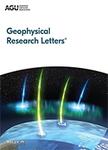版权所有:内蒙古大学图书馆 技术提供:维普资讯• 智图
内蒙古自治区呼和浩特市赛罕区大学西街235号 邮编: 010021

作者机构:National Institute of Information and Communications Technology Tokyo Japan Meteorological Research Institute Tsukuba Japan Institute of Environmental Physics University of Bremen Bremen Germany Mynavi Corporation Tokyo Japan Max Planck Institute for Solar System Research Katlenburg-Lindau Germany Department of Chemical Science and Engineering Tokyo Institute of Technology Tokyo Japan Earth-Life Science Institute Tokyo Japan Faculty of Science Hokkaido University Sapporo Japan Department of Life Sciences National Cheng Kung University Tainan Taiwan Faculty of Education Tokyo Gakugei University Koganei Japan Graduate School of Pure and Applied Sciences University of Tsukuba Tsukuba Japan
出 版 物:《Geophysical Research Letters》 (地球物理学研究快报)
年 卷 期:2020年第47卷第3期
页 面:e60090-e60090页
学科分类:07[理学] 0708[理学-地球物理学]
主 题:sprite HO mesosphere
摘 要:No direct observational evidence of sprite-produced active radicals has been presented owing to the difficulty of observing a small event area in the nighttime mesosphere, whereas sprite chemical models have indicated that sprite discharge locally affects the atmospheric composition. We present the first observational evidence of a HO production above sprite-producing thunderstorms from the coincidence of temporal-spatial observations of HO spectra, sprite events, and thunderstorms by two space instruments, a submillimeter-wave limb spectrometer and ultraviolet/visible Imager and a ground-based very low frequency radiation lightning detection network. A total of three areas was identified with enhanced HO levels of approximately 10 molecules. A chemical sprite model indicates an increase in HO in the considered altitude region; however, the predicted production due to a single sprite event is smaller than the observed enhancement. Our observational results suggest that sprites potentially contribute 1% of nighttime background HO generation at altitudes of 75–80 km globally. Clear HO enhancements above sprite-producing thunderstorms were identified by coincidence of space and ground-based observations Enhanced HO amounts in a sprite event area were estimated to be 10 molecules Sprites potentially contribute about 1% of nighttime background HO generations at 75–80 km globally HO radical, a key atmospheric oxidant in the mechanisms that influence the atmospheric composition of our planet, has been predicted to be generated by lightning-induced upper atmospheric discharge, called sprites, from water vapor. However, there has been no observational evidence of sprite-producing active radicals due to the difficulty in specific observations that identify these radical productions by sprite, caused by factors such as a very small molecular abundance and narrow event area in the upper atmosphere. For the first time, we present observational evidence of a rise in HO amount abo